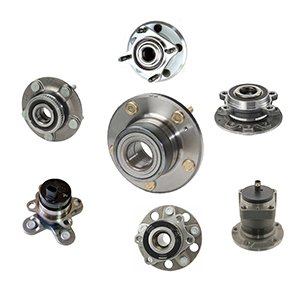When it comes to vehicle maintenance, rodamientos de rueda are one of those components that often go unnoticed—until something goes wrong. These small but crucial parts play a significant role in ensuring your car runs smoothly and safely. In this comprehensive guide, we’ll dive into everything you need to know about the wheel bearing, including their function, signs of wear, and how to maintain them.

What Are Wheel Bearings?
Wheel bearing is an essential component located within the wheel hub assembly. They allow your wheels to rotate smoothly with minimal friction, supporting the weight of your vehicle while enabling seamless movement. Without properly functioning wheel bearings, your car’s performance and safety could be compromised.
Why Are Wheel Bearings Important?
Wheel bearings are critical for several reasons:
- Smooth Ride: They reduce friction between the wheel and the axle, ensuring a smooth and comfortable driving experience.
- Safety: Faulty wheel bearings can lead to wheel instability, increasing the risk of accidents.
- Fuel Efficiency: Properly functioning bearings reduce rolling resistance, which can improve fuel efficiency.
- Longevity of Other Parts: By minimizing wear and tear on tires and suspension components, wheel bearings help extend the life of other parts.
Signs of Worn-Out Wheel Bearings
Recognizing the symptoms of failing wheel bearings can save you from costly repairs and potential accidents. Here are the most common signs to watch for:
- Unusual Noises: A grinding, humming, or growling sound coming from the wheels is a telltale sign of worn bearings.
- Steering Wheel Vibration: If your steering wheel shakes or vibrates, it could indicate a problem with the wheel bearing.
- Uneven Tire Wear: Faulty bearings can cause uneven tire wear, which may affect your vehicle’s alignment.
- Loose or Wobbly Wheels: If your wheel feels loose when you try to move it, the bearings may be damaged.
- ABS Malfunction: Modern vehicles with ABS systems may trigger warning lights if the wheel bearings are failing.
How to Maintain Your Wheel Bearings
Proper maintenance can significantly extend the life of your wheel bearings. Here are some tips to keep them in top condition:
- Regular Inspections: Have your bearings checked during routine maintenance or tire rotations.
- Keep Them Clean: Dirt and debris can damage bearings. Ensure they are properly sealed and lubricated.
- Avoid Water Exposure: Driving through deep water can cause moisture to seep into the bearings, leading to corrosion.
- Listen for Warning Signs: Address any unusual noises or vibrations immediately to prevent further damage.
When to Replace Wheel Bearings
A wheel bearing is designed to last a long time, but they’re not indestructible. Most manufacturers recommend replacing them every 85,000 to 100,000 miles, but this can vary depending on driving conditions. If you notice any of the warning signs mentioned above, it’s best to consult a professional mechanic for an inspection.
DIY vs. Professional Replacement
Replacing wheel bearings can be a complex task, especially for those without mechanical experience. While some car enthusiasts may attempt a DIY replacement, it’s often safer and more efficient to leave this job to a professional. Improper installation can lead to further damage and safety risks.
Conclusion
Wheel bearings may be small, but their role in your vehicle’s performance and safety is enormous. By understanding their function, recognizing signs of wear, and maintaining them properly, you can ensure a smoother, safer, and more efficient driving experience. If you suspect your wheel bearings are failing, don’t delay—address the issue promptly to avoid costly repairs and potential hazards.
